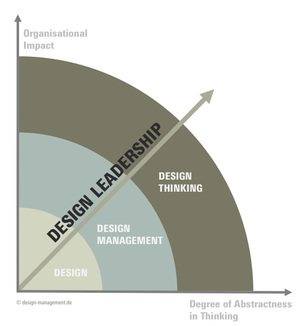"Design Management shifts design from the operational level to a strategic approach applied to foster innovation in different business situations and business units."

Since I will be referring to Design Management (DM) throughout my posts, and since I’m enrolled in the Masters of Professional Studies at the Shintaro Akatsu School of Design at the University of Bridgeport, let’s start the blog by defining Design Management. Although it’s an evolving field, there is a common understanding of what it is and its impact in many areas of an organization.
But before we jump into Design Management, let’s talk about Design. When people hear the word Design, they usually associate it with a deliverable, such as a website, a brochure, a beautifully designed package, an advertising campaign, etc. Imagine taking the process designers go through to create these deliverables and applying them to any situation that requires a solution. These situations could be as vast organizational change and leadership or as specific as software development and manufacturing. Design Management shifts design from the operational level to a more strategic approach applied to foster innovation in different business situations and business units.
Design Management is a system to foster innovation in order to approach situations that require improvement. If you think about it, when we improve something, we innovate it. Whether it’s improving a product, a service, a process, or a result… The advantage of DM is that its main focus is not on problems or on a final result, but rather, on the problem-solution space, which fosters innovation. Design Management applies the Design Thinking mindset to an organization’s activities, processes, and especially environment: one that encourages risks, is accepting of failure, is forward-thinking, and judgment-free. To illustrate this, let’s take two fields: design and engineering. While many engineers use an established set of tools to solve a problem, designers work on an appropriate space to foster the problem-solution process. In this space, where the problem and solution coexist, both are still undefined and mixed in the same conceptual space.
In these Design-Thinking spaces, people use different concepts, systems, tools, and methods to solve a problem that was initially not even defined. And through this creative iteration with the use of different tools and methods, chances of finding a successful solution increases. This is how innovation is born. When people and companies start to embrace and apply the concept of Design Thinking to business, a.k.a. Design Management, they will unleash the true power of innovation, where even the unthinkable becomes a result of innovation.

 RSS Feed
RSS Feed
